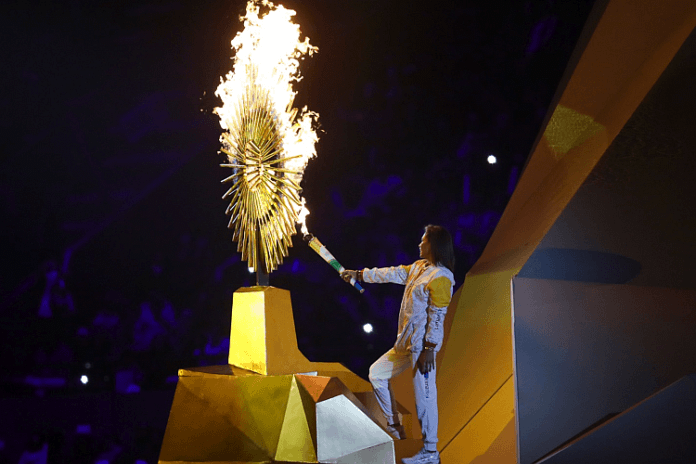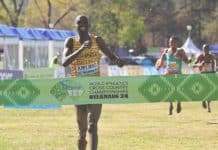
If you have been watching the XVIII Pan American Games in Lima, Peru, you have seen some compelling competition and some amazing stories, the type of drama that makes the Olympic Games a world-wide attraction.
But following his highly-upbeat mid-Games news conference on 3 August, PanAm Sports Secretary General Ivar Sisniega told Reuters that there is concern about the low interest from American and Canadian media about the Games:
“If you think the American continent is just USA and Canada then you’re right there is (a lack of interest). Some countries … maybe need to open up to what happens in the world and not be so involved with what just happens (at home).
“We have spoken to NBC and major television networks and it comes down to how many of the sports are Olympic qualifiers and that is something we are going to push really aggressively over the next four years.
“We have spoken to USA and Canada about these issues, it’s a perception that they have that the Games are not of a high quality.
“These are the highest quality Games in history so we are hoping to move forward on this and the U.S. and Canadian media understand how big these Games are and the level of athletes is high with over 100 Olympic medalists. It is certainly a challenge we have for the future.”
Reuters reporter Steve Keating further explained that “Sisneiga says a goal of Panam Sports and its president Neven Ilic is to have all the sports in the Olympic Games have qualifiers through the Pan American Games. In Lima, there are 21 Olympic qualifiers to Tokyo 2020, an increase from 18 in Toronto in 2015 and 12 in Guadalajara in 2011.”
Don’t underestimate either Sisniega or Ilic. Sisniega competed for Mexico in three Olympic Games in the modern pentathlon in 1980-84-88 and is a graduate of Stanford (Bachelor’s) and the University of Arizona (Masters). Ilic is from Chile and has modernized Olympic sport in that country, was elected to head PanAm Sports in 2017 and elected as a member of the International Olympic Committee in the same year.
The two are taking PanAm Sports in new directions, following the death of Mario Vasquez (MEX), the long-time leader of the Pan American Sports Organization (PASO) in 2015. The approach is more modern, more efficient and focused on their new mission statement: “PanAm Sports fuels the development of sport and supports the work of our 41 member nations to inspire the next generation of athletes in our continent … ensuring the success and celebration of our flagship event, the Pan American Games.”
And fearless. ESPN is televising the Games in the U.S. in 2019, but Sisniega talked about NBC in his comments. When was the last time you heard about a Games owner skipping over its U.S. rights holder?
OK, so what happens now?
As the Reuters story pointed out, it’s not just the U.S. and Canadian media who have low interest in the 2019 Pan American Games, but so do several of the key U.S. federations. USA Swimming picked its PanAm team off its 2018 Nationals, sending its top racers to the 2019 World Championships, second squad to the World University Games in Naples (ITA) and the third team to Lima. USA Track & Field didn’t have a selection meet for the Pan Am team because its 2019 Nationals were held late, to focus on the 2019 World Championships that will be in Doha (QAT) in late September. It picked its team off of the best marks list in 2019 (after an arbitrator’s decision), but many athletes declined to go and the American track team in Lima is weak.
So what now? A significant part of the problem is history.
The first (official) Pan American Games was held in Buenos Aires (ARG) in 1951 and it has been held every four years since. Back then, there were no World Championships in many sports; FINA started theirs for aquatics in 1973; the IAAF didn’t start a Worlds for track & field until 1983. There were no World Cup circuits, no Diamond League meets and so on.
From a time when a major international competition like the Pan American Games was looked at as an important destination – because there were so few opportunities otherwise – the calendar has become enormously crowded. This is important; aged observers of the Olympic Movement in the United States will remember that way back in 1979, the United States Olympic Committee created the National Sports Festival (later, U.S. Olympic Festival) to give American athletes a summer domestic competition opportunity and an Olympic-style experience. It served its purpose, but as the international calendar filled to overflowing, the event was ended after its 1995 edition in Denver, Colorado.
Sisniega indicated that he and Ilic see the future in tying the Pan American Games more closely to qualification for the Olympic Games. The increase in such ties – from 12 sports for the 2011 Games to 21 in Lima – is impressive, but it didn’t solve the problem of limited interest this year did it?
There are other options. If the desire is to have a bigger impact, perhaps consider:
● The PanAm Games have always been held in the year prior to the Olympic Games, But that’s also the years when the IAAF (track), FINA (aquatics) and FIBA (basketball) all hold their World Championships. Wouldn’t it make sense to have the Pan American Games in a bigger spotlight in the even-numbered year between Olympic Games?
The Asian Games, which is by far the biggest regional Games in the world, also started in 1951 but switched immediately to the second year after the Olympic Games and has grown in its importance in the region.
This would remove most of the Olympic qualifying ties for the Pan American Games, but if it were a bigger deal, would that matter? (Answer: it wouldn’t.)
● The Pan American Games is way too big. At 39 sports and 419 events, PanAm Sports is already asking itself if having all of these events is the right approach. In terms of reaching its goals, what do the non-Olympic sports bring to the event? What about the number of entries per event?
Moreover, what is the added costs to organizers? The 2019 Games in Lima have been reported to cost $1.2 billion U.S.: $430 million for organization, $470 million in infrastructure, $180 million for construction of the Pan American Village and $106 for other items.
Just as with the Olympic Games, less cost will open new opportunities for better Games.
● And then there is the question of what an “athlete-centric” event means in the 21st Century. In 1951, money wasn’t an issue due to the amateur code, but there are athletes today who will pass on an event like the Pan American Games because – unlike the IAAF Diamond League and FINA Swimming World Cup – it doesn’t pay any prize money.
The Olympic Games is under pressure from some elite athletes concerning prize money, but many more are happy just to be able to make it to the Games, and most (if not all) of the National Olympic Committees pay bonuses for medals. To attract the top athletes from the U.S. and Canada, prize money of even modest amounts ought to be looked at.
There is a place for the Pan American Games and as Ilic, Sisniega and others are bringing change to the PanAm Sports organization, new thinking can help the Pan American Games flourish in an environment far removed from the one that existed in 1951.
Rich Perelman
Editor



















